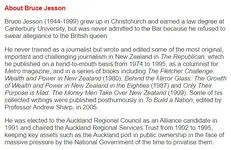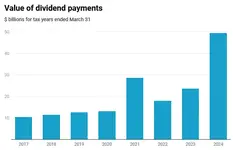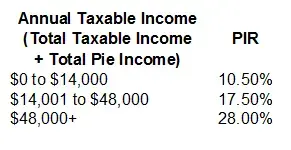Extremely poor decision making
Three other people joined KiwiRail chief executive Peter Reidy on a trip to South Korea.

www.nzherald.co.nz
Engine parts for Interislander’s mega ferries were built and tested before
KiwiRail terminated its contract with Hyundai Mipo Dockyard (HMD), the
Herald can reveal.
The Government announced on December 13 it would not give the state-owned enterprise more money for the new ferries - leaving the
plan to replace its ageing Cook Strait fleet dead in the water.
However, KiwiRail did not officially cancel the $551 million fixed-price ship-building contract with HMD until February 8
after receiving a letter from Finance Minister Nicola Willis.
In a written Parliamentary question, Labour asked Minister for State-Owned Enterprises Paul Goldsmith what work had been completed on the ferries by that point.
Discover more
KiwiRail advised 87 per cent of drawings for the two ships had been submitted, Goldsmith said.
Make a beeline for the Beehive
Get weekly politics headlines with commentary from our political experts straight to your inbox.
Please email me competitions, offers and other updates. You can stop these at any time.
Sign Up
By signing up for this newsletter, you agree to NZME’s
Terms of Use and
Privacy Policy.
“For the first ship, the four generator sets (diesel engine and alternators), frequency converter for azimuth thruster system (propulsion) and azimuth thruster mounting seats had been built, tested and accepted,” he said.
“For the second ship, all four alternators were built, tested, and accepted.
“The safety management and control system for both ships had been tested and accepted. The dockyard also blasted and primed some metal for later stages and produced five plates.”
ADVERTISEMENT
Advertise with NZME.
Minister for State-Owned Enterprises Paul Goldsmith said all four alternators were built, tested and accepted for one ship. Photo / Mark Mitchell
The mega ferries were being designed with a hybrid technology using electrical propulsion from generators fuelled by diesel and batteries recharged by electrical shore power.
KiwiRail chief executive Peter Reidy said they were still “considering options” for the mega ferries up until February 8.
“Until the final decision to cancel the contract, the shipyard made its own decisions about production schedules,” he said.
The contract with HMD was signed in 2021. The vast majority of design work and selection and approval of components was completed by December 2023, Reidy said.
Most of the work Goldsmith listed in his response was accepted or about to be accepted when the Government refused further funding, he said.
“A small amount of work planned by HMD and their suppliers, such as the testing and acceptance of the first ship’s frequency converter for the azimuth thruster system and testing and acceptance of the second ship’s alternators, happened in the period between December 13, 2023 and February 8, 2024.”
The work completed during this period would make no material difference to confidential cancellation negotiations, Reidy said.
Labour transport spokesman Tangi Utikere said this revealed a significant amount of work on the ferries had already happened.
ADVERTISEMENT
Advertise with NZME.
“That work will be a cost to the Government if the contract is scrapped. KiwiRail secured the ferries contract at a competitive price three years ago, and costs have gone up since then. So, if any aspect of it is being renegotiated, those rising costs will be put straight back on Government.”
It has previously been reported
Reidy travelled to South Korea earlier this year.
The
Herald can now reveal three other people joined him.
They were KiwiRail ships programmes director Massimo Soprano, Treasury projects, financial and commercial director Chris White and
ferry Ministerial Advisory Group chairman Mark Thompson.
Treasury said the purpose of the trip was to meet with Hyundai Mipo Dockyard
as part of contractual discussions.
“Chris White’s travel with Peter Reidy to Korea reflects that the Treasury is working to support an appropriate commercial outcome of the negotiations and, with KiwiRail and the Ministerial Advisory Group, to understand and advise ministers on replacement ferry options,” Treasury said in a statement.
Utikere said it was curious the Ministerial Advisory Group was part of a trip focused on terminating the contract when the group is tasked with looking at replacement options.
There was no word
in the 2024 Budget on what will replace the
cancelled mega ferries, and Treasury said exiting the contract to build them is a fiscal risk.
Utikere also noted the contingency to fund the cost of breaking the contract with HMD was not disclosed.
“The Government had an opportunity in the Budget to signal a plan moving forward and they have chosen not to do that.”
The Budget did reveal one thing related to Cook Strait’s future -
there is $600,000 to investigate emergency towing options, which
the maritime union says is an ambulance at the bottom of a cliff.
Georgina Campbell is a Wellington-based reporter who has a particular interest in local government, transport, and seismic issues. She joined the Herald in 2019 after working as a broadcast journalist.






